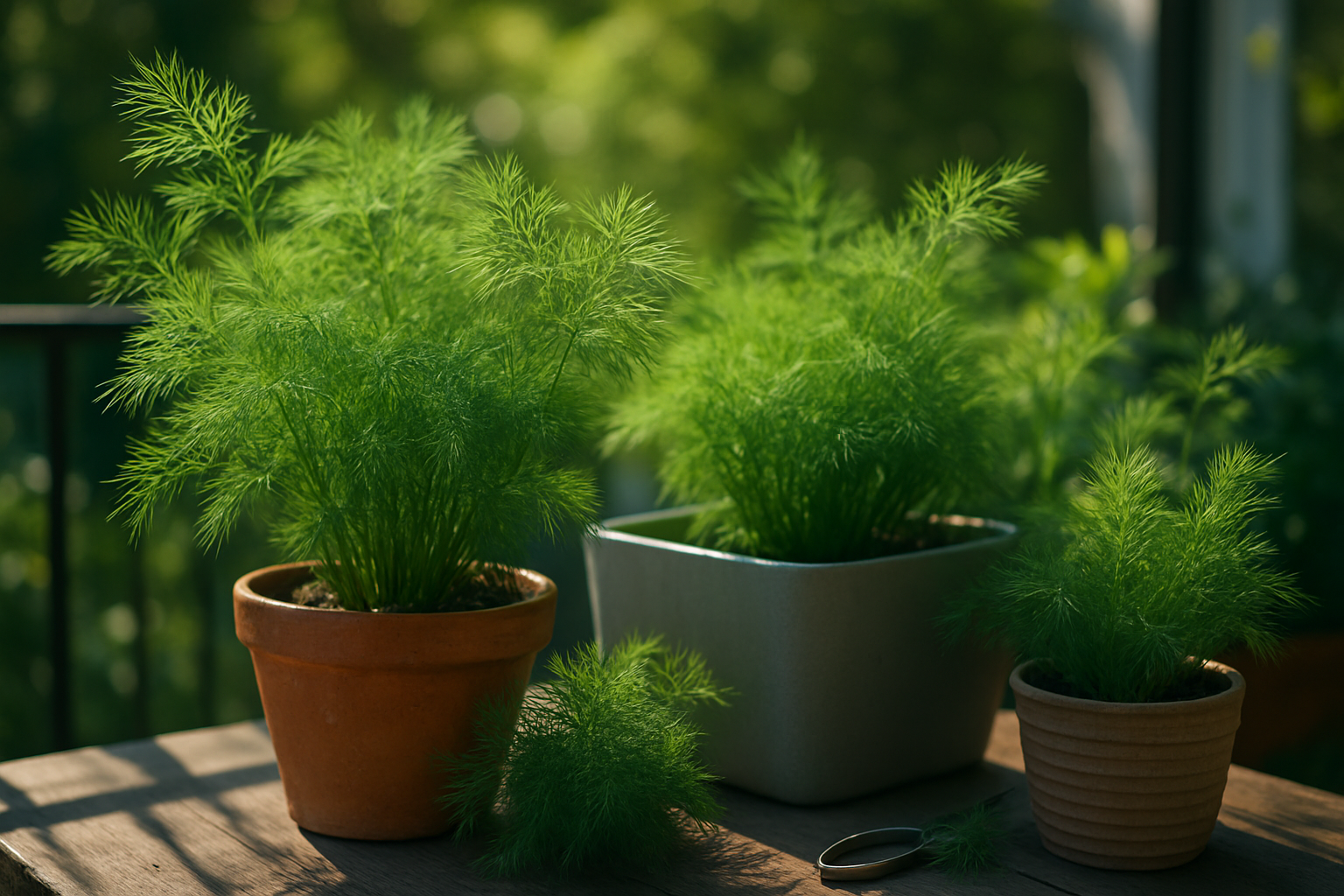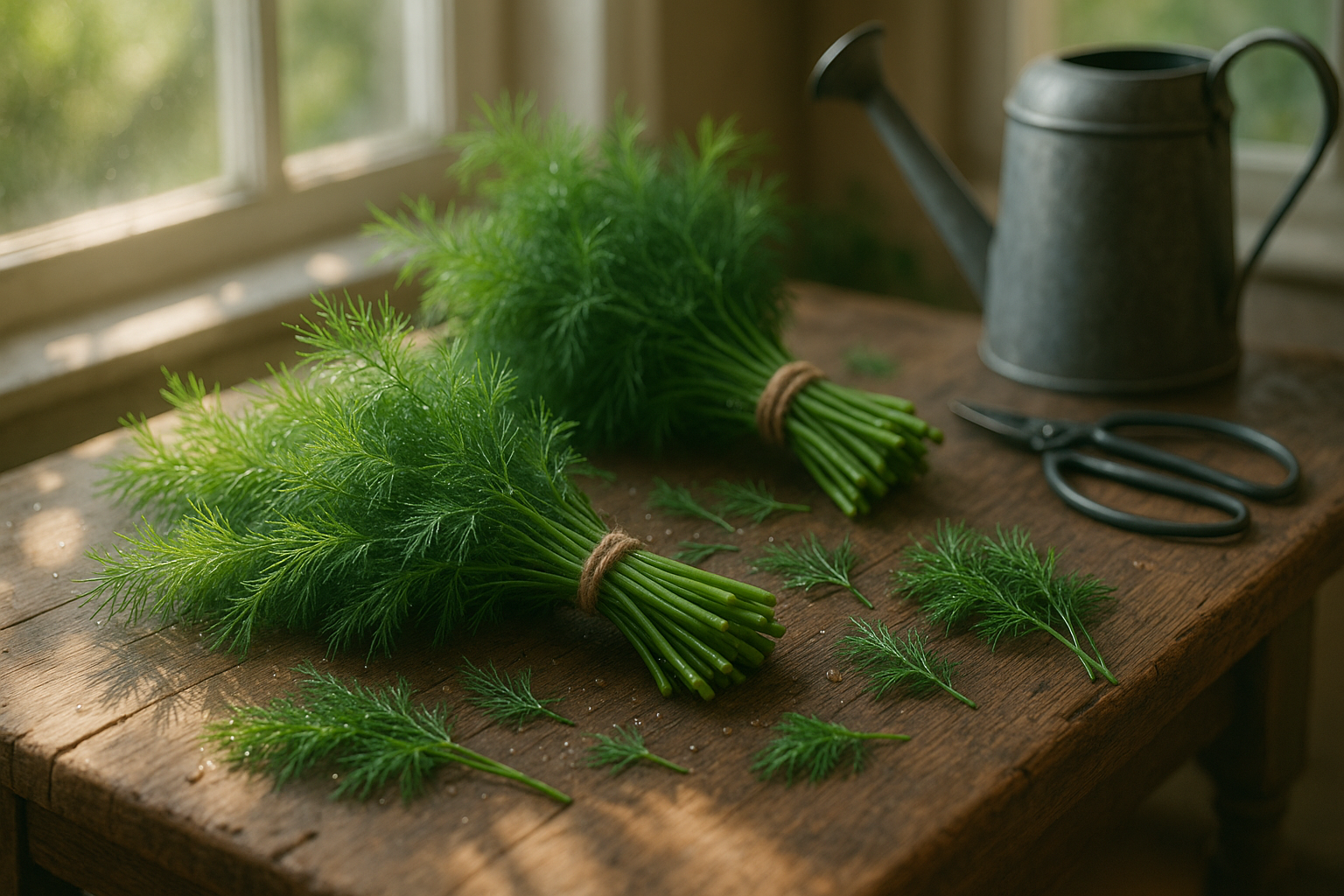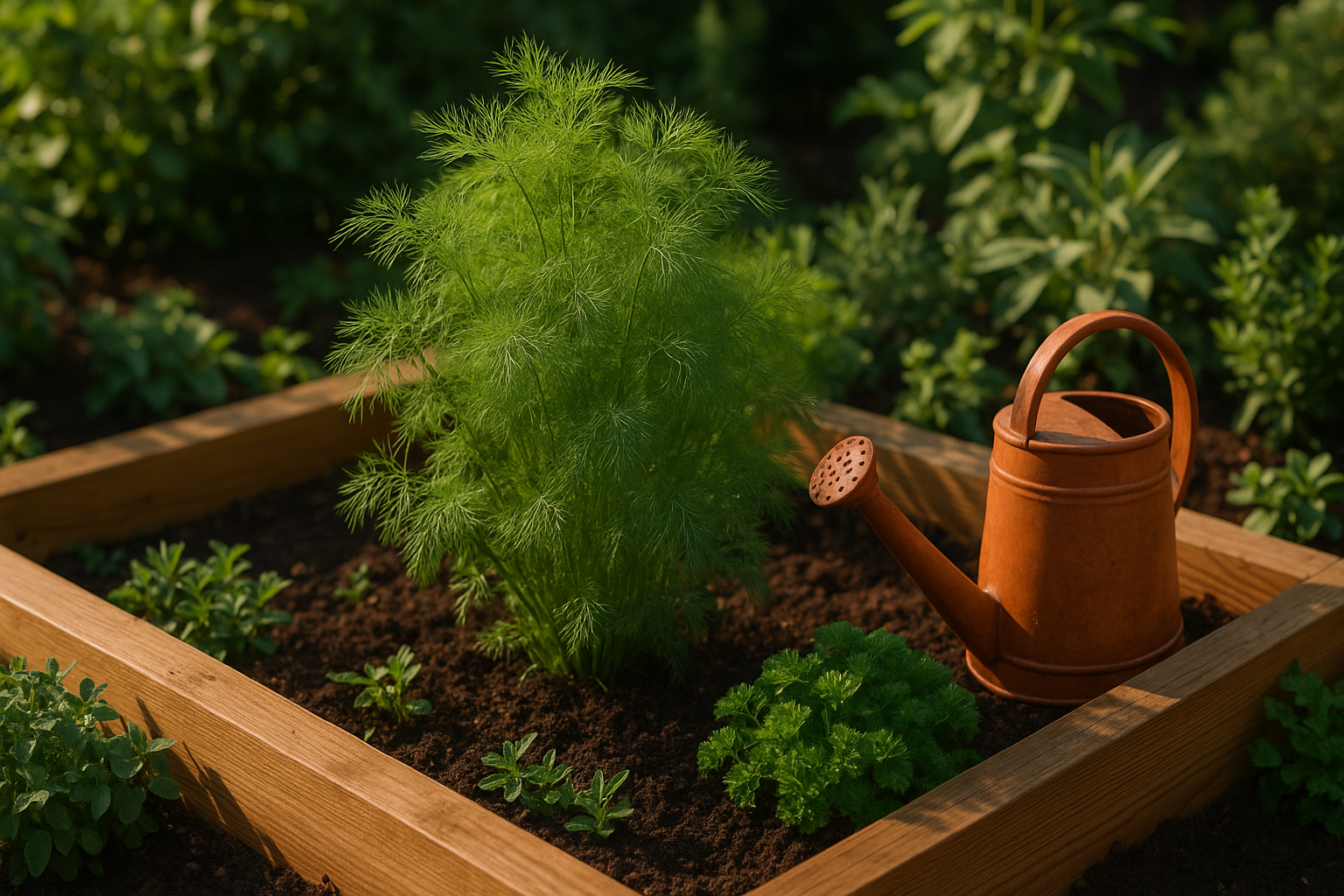Introduction
Dill sunlight needs are a critical factor for anyone hoping to grow this aromatic herb successfully at home. Dill is a favorite in both gardens and kitchens, flavoring everything from pickles to fresh summer salads. But to enjoy robust, fragrant dill leaves, it’s important to understand exactly how much sun it takes to thrive.
While some herbs tolerate shade, dill has its own unique preferences, and getting this wrong could mean spindly plants or muted flavor. Sunlight influences everything from growth rate to leaf production, whereas too much shade can lead to leggy stems and a lackluster harvest.
By familiarizing yourself with dill’s ideal growing conditions, you can ensure your homegrown crop stands out—whether you’re a seasoned gardener or just starting with herbs on your kitchen windowsill. Let’s explore whether dill really needs full sun or if it can also thrive in shadier spots.
Understanding Dill’s Sunlight Needs

Dill is a hardy annual herb with feathery green leaves prized for their fresh flavor and attractive aroma. Like many herbs, dill relies heavily on sunlight to fuel photosynthesis—the process by which plants convert light into the energy needed for healthy growth, leaf production, and strong flowering.
When gardeners talk about “full sun,” they mean a spot that receives at least six hours of direct sunlight per day, preferably more. This is ideal for dill’s development, encouraging taller, bushier plants and more vigorous leaf growth. In contrast, “partial shade” refers to areas with only three to six hours of direct sun or dappled light throughout the day—conditions where dill may survive but often grows spindly and produces less flavor.
Seasoned gardeners almost always recommend planting dill where it gets full sun; for example, a window box on a sunny balcony or the sunniest corner of your vegetable patch. If you live in an especially hot climate, a bit of afternoon shade can help prevent bolting (when dill quickly flowers and sets seed), but otherwise, prioritizing strong, consistent sunlight is the surest way to grow lush, fragrant dill perfect for kitchen use.
Ideal Growing Conditions for Dill
Dill thrives best in loose, well-draining soil that’s rich in organic matter—think compost or aged manure mixed in for extra nutrients. Aim for a slightly acidic to neutral soil pH, ideally between 5.5 and 6.5, which helps dill absorb nutrients more efficiently.
Good drainage is crucial to prevent root rot. If you have heavy clay soil, consider raised garden beds or containers with holes at the bottom. Dill enjoys consistent moisture but be careful not to overwater; keeping the soil evenly damp is perfect, especially during germination and early growth.
For sun exposure, dill is a true sun lover. It needs at least six to eight hours of direct sunlight daily to develop its best flavor and strong stems. If you garden outdoors, plant dill in spots that won’t be shaded by taller plants or structures—southern or western-facing locations are usually ideal.
In small spaces or cooler climates, dill also grows well in containers on a sunny patio or balcony. Indoors, position pots near a south-facing window where they’ll get maximum daylight. Rotate pots occasionally to keep plants growing straight and lush.
By focusing on these conditions, you’ll set your dill up for a healthy, aromatic harvest.
Signs Your Dill Isn’t Getting the Right Amount of Sun
Noticing your dill plants stretching tall with thin, weak stems? That’s a classic sign they aren’t getting enough sunlight. They may also grow more slowly than expected, with leaves that remain pale rather than vibrant green. On the other hand, too much direct sunlight can cause leaves to turn yellow or even wilt, especially during the hottest part of the day.
Both extremes can drain your dill’s health and flavor—too little light leads to bland, spindly herbs, while too much scorches leaves and stunts growth. To check if your dill is thriving, observe its posture: healthy dill stands upright with bushy foliage.
If you’re unsure, use a sunlight meter or a simple phone app to track how many hours of direct light your garden or windowsill receives—aim for 6 to 8 hours daily. In shadier spots, consider moving containers to sunnier locations, or provide afternoon shade if you notice signs of leaf burning.
Remember, a happy dill plant will reward you with lush, aromatic leaves perfect for your favorite recipes. Keep an eye out for changes in color, vigor, and leaf size to fine-tune its sun exposure.
Maximizing Sunlight for Healthy Dill
Getting the most sunlight is key to growing healthy, vibrant dill. Aim to place dill in a spot that gets at least 6 hours of direct sunlight each day—southern exposures in a garden or on a balcony work well.
For limited space or balconies, use portable containers and move your dill to follow the sun as it shifts throughout the season. If being outdoors isn’t an option or your windowsills are shaded, try grow lights to supplement natural light. Fluorescent or LED grow lights set about 6 inches above your plants will keep dill happy indoors.
Rotate pots every few days to help each side of the plant get balanced sunlight and avoid leggy, weak growth. In gardens with partial shade, consider planting dill on the east or west side to catch morning or afternoon sun. Be careful not to tuck dill behind taller plants or structures, as this can block crucial light.
A common mistake is underestimating how much direct sunlight dill needs—if you notice spindly stems or pale leaves, move your plant to a brighter spot right away. With a little attention to placement and light, your dill will flourish—even in small spaces.
Growing Dill in Less Than Ideal Light
Growing dill in low-light or shady environments is definitely possible, but it does come with some trade-offs. Without full sun, dill tends to grow more slowly, with thinner stems, fewer leaves, and a milder flavor compared to plants bathed in sunlight.
To give your dill a fighting chance, choose a spot that gets at least 3-4 hours of indirect sunlight, such as a bright windowsill. You can also grow dill indoors under LED grow lights, which can greatly improve the plant’s vitality and flavor.
Another helpful strategy is companion planting—place dill among taller vegetables like tomatoes or peppers, where it will enjoy dappled light and help deter some pests.
Just remember, you may need to harvest dill leaves more frequently since slower growth can cause plants to bolt (flower) earlier. While the harvest might not be as abundant, a bit of creativity can still yield enjoyable, homegrown dill even in less-than-ideal light.
Harvesting and Caring for Dill

Dill is best harvested just before the plant flowers, when its feathery leaves are at their most flavorful and aromatic—usually about eight weeks after planting. Snip leaves in the morning, after the dew has dried but before the sun gets too strong, as this is when the essential oils are at their peak.
Consistent sunlight encourages bushier, healthier growth, so make sure your dill gets at least six hours of sun daily. When watering, aim for the base and keep the soil lightly moist, but avoid soaking—it prefers well-drained conditions.
Regularly pinch back the tops to prevent early flowering and promote new leaf growth. When harvesting, cut about a third of the plant each time to maximize ongoing harvests.
Every garden and climate is different, so try different watering schedules and pruning frequencies to see what helps your dill thrive. Keep notes on your results—you’ll quickly become an expert in what works best for your space.
